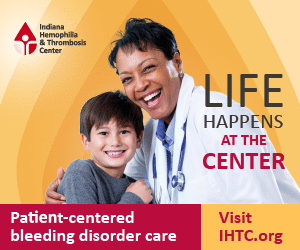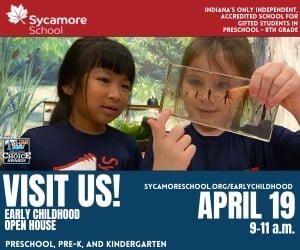Boosting your child’s chances of academic success doesn’t require drilling them on vocab words as toddlers, buying pricey learning apps or packing their schedule full of socialization opportunities. Instead, the key to unlocking future potential may simply depend on how often you talk to them.
That’s the premise of the book Thirty Million Words: Building a Child’s Brain by Dr. Dana Suskind, and her Chicago-based Thirty Million Word Initiative. The 30 million number comes from a 1995 study that found that some children heard 30 million fewer words by their fourth birthdays than their peers. The children who heard more words were better prepared when they entered school, and by third grade, they had bigger vocabularies, were stronger readers and scored better on tests.
The impact of a lack of early language exposure has long been the focus of experts working with children born with hearing loss, including Teri Ouellette, president of the St. Joseph Institute for the Deaf and director of the organization’s school on Indianapolis’ northwest side.
“We hear often, ‘Well kids don’t talk until they’re two anyway.’ But you don’t just suddenly start talking when you’re two. Infants spend a huge amount of time listening and laying down auditory pathways,” she says. “We have a window of development neurologically, and once we’ve passed that window, you can’t go back.”
Similarly, Suskind first began researching the word gap while working as a surgeon with cochlear implants, small electronic devices that do the work of damaged parts of the inner ear, allowing children with hearing loss to listen and speak. She wanted to know why, when she implanted two children at the same age, they could go on to have very different outcomes.
Years later, she published her book about the 30 million word gap, and introduced a whole generation of parents to the Three Ts:
–Tune in to what your child is doing.
–Talk more to your child using lots of descriptive words.
–Take turns with your child as you engage in conversation.
The advice overlaps with the techniques Ouellette and her staff use to engage and communicate with the 3- through 8-year-olds who attend the St. Joseph Institute for the Deaf, the state’s only full-time school teaching young children who are deaf or hard of hearing how to listen and speak. But Ouellette stresses that the book’s lessons can be helpful for parents of children with hearing loss and other disabilities or those without issues.
Want to engage more with your child? Ouellette encourages parents to:
- Aim for meaningful communication.
When it comes to your child hearing more language, the rule of quality over quantity applies.
“It’s important that the language is focused on the child, that it makes the child part of the conversation,” Ouellette says. “A lot of times we’ll hear, ‘They just need to be around kids their age.’ While socialization is important, children also need a partner who’s a little more mature in understanding what that communication interaction should be.”
- Take reading further.
You don’t have to have a huge library to make reading meaningful for language development, Ouellette stresses.
“One of the key reasons experts encourage reading to your child is because it provides an avenue for joint attention. I’m less concerned to see reading than simply talking,” she says. “I tell parents, stop worrying what the words say and start talking about what you see in the pictures.”
- Make screen time interactive.
If checking your phone is eating into time you’d otherwise spend talking with your child, it can limit the words they hear. The same goes for kids shows which, while exposing children to language, don’t tick off any of the Three Ts because they’re not truly interactive. But a parent can change that.
“If you watch that with your child, you can pause it and talk about the plot – ‘I wonder how Lightning McQueen feels? What do you think will happen next?’” Ouellette says. “It’s important to talk about what you see so it’s not simply a one-sided interaction.”
All parents (and kids) can benefit from more connection, and the efforts to close the 30 million word gap are an important reminder of what hearing loss experts have known for years – that exposure to language is fundamental element to a child’s overall development.





